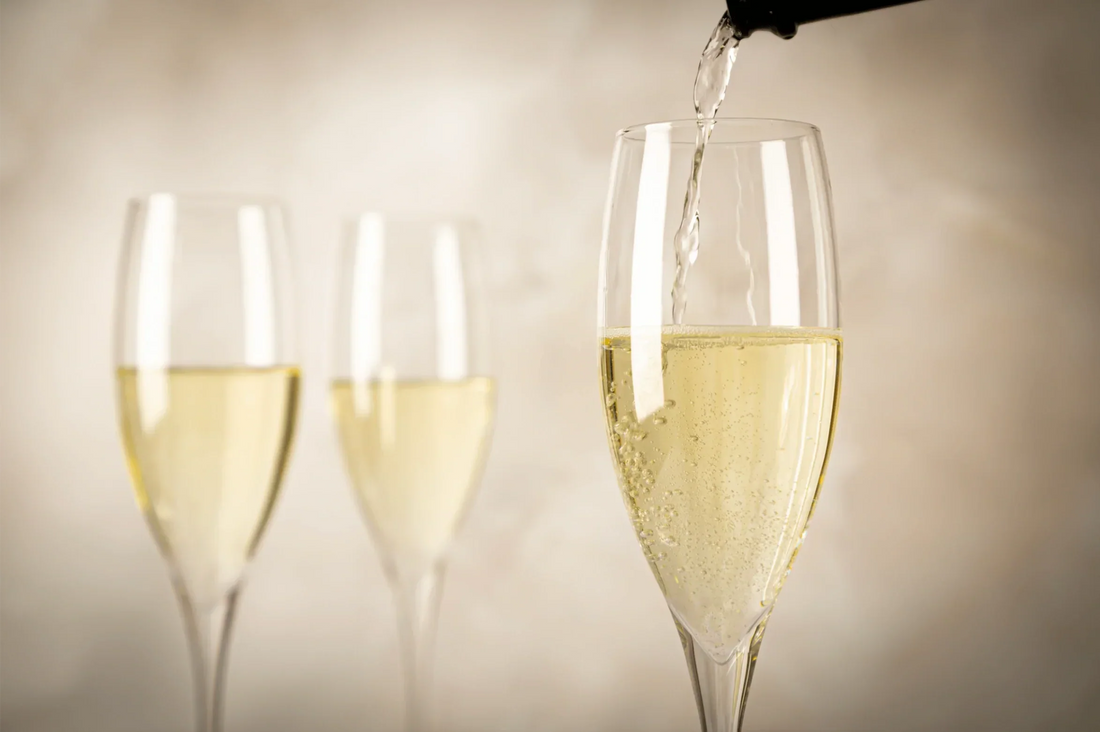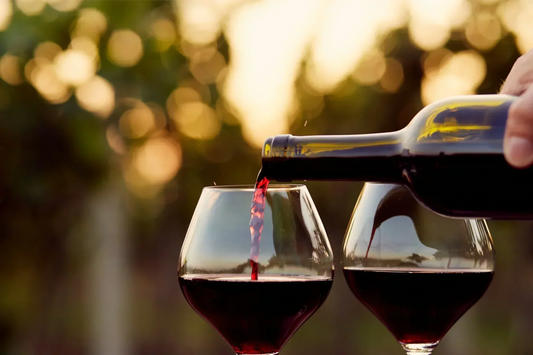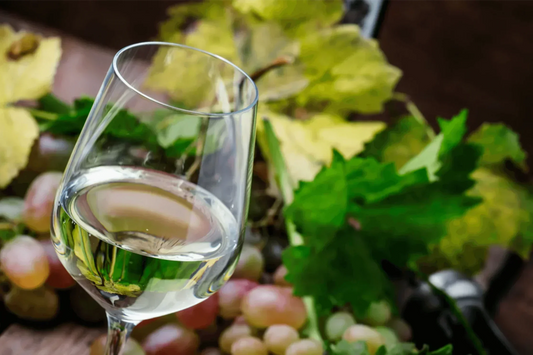
How to Choose Sparkling Wine: Taste, Budget & Food Pairing Tips
Choosing the right sparkling wine doesn’t have to be daunting, even with numerous styles, sweetness levels, and price points available. Whether you’re organising a celebration, hosting a dinner party, or simply adding sparkle to a quiet night in, knowing how to select sparkling wine can make all the difference. In this guide, we’ll guide you through the key factors, from flavour profiles and food pairings to budget-friendly tips, so you can confidently pick the ideal bottle for any occasion.
Quick Sparkling Wine Decision Guide
Choosing a sparkling wine goes beyond brand or price; it’s about discovering something that perfectly matches your taste, fits within your budget, and complements your special occasion. Here are a few things to consider:
| Quick Guide to Choose the Perfect Sparkling Wine | ||
|---|---|---|
| Factor | What It Means | Quick Choosing Tips |
| Sweetness Level | Ranges from bone‑dry Brut Nature (0-3 g/L sugar) to sweet Doux (50+ g/L). Affects taste and food pairing. | For a dry, crisp taste, go for Brut with seafood; for a touch of sweetness, try Extra Dry with light appetisers; for desserts, pick Demi‑Sec or Doux. |
| Flavour & Style | From bright citrus to rich nutty tones, shaped by grapes, terroir, and winemaking style. | Love refreshing wines? Choose Citrus & Crisp styles. Prefer fruity? Opt for Fruity & Floral. For richer depth, try Nutty & Toasty styles. |
| Budget & Method | Price reflects production method. Traditional Method = complex & premium; Tank Method = fresh & affordable. | For a splurge, pick Champagne or Cava (Traditional Method). For value and freshness, go for Prosecco (Tank Method). |
| Food Pairing | Certain wines enhance specific dishes for a balanced tasting experience. | Pair Brut Champagne with oysters or sushi, Prosecco with prosciutto, and Moscato with fruit tarts. |
| Occasion | Different wines suit different moments, from casual to formal. | For celebrations, choose Vintage Champagne. For casual gatherings, opt for Prosecco or Rosé Sparkling. |
Key Factors to Consider When Choosing Sparkling Wine
Before diving into the world of sparkling wine, it’s essential to understand the factors that affect flavour, texture, and overall experience. From sweetness levels to production methods, these elements will guide you in choosing a bottle that suits your taste, budget, and occasion.
1. Sweetness Level (From Brut Nature to Doux)
Sweetness is one of the most noticeable features of sparkling wine, and it’s marked on the label with terms like Brut, Extra Dry, or Doux. Dryer styles (such as Brut Nature or Extra Brut) tend to taste crisp and refreshing, while sweeter styles (like Demi-Sec or Doux) offer a richer, more dessert-friendly experience. Knowing your preference will make choosing much simpler.
Common Sparkling Wine Sweetness Levels:
- Brut Nature (0-3 g/L): Bone-dry with no added sugar; crisp, sharp, and intensely refreshing. Best for those who love very dry wines or pairing with oysters, sushi, or light appetisers.
- Extra Brut (3-6 g/L): Still very dry, but with slightly more softness than Brut Nature. Great for seafood, fresh salads, or as an aperitif.
- Brut (6-12 g/L): Dry yet balanced; the most popular style worldwide. Works well with almost anything, from canapés to roast chicken.
- Extra Dry (12-17 g/L): Off-dry with a gentle touch of sweetness that balances acidity. Ideal with spicy Asian dishes or creamy cheeses.
- Demi-Sec (32-50 g/L): Noticeably sweet, perfect for desserts like fruit tarts or panna cotta. Also, it pairs surprisingly well with blue cheese.
- Doux (50+ g/L): The sweetest style, rich and indulgent, often enjoyed with chocolate desserts or as a dessert on its own.
2. Flavour & Style Preferences
The flavours in sparkling wine derive from grape varieties, winemaking techniques, and ageing processes. You might prefer bright citrus notes, floral aromas, or richer, toasty flavours. Dry, crisp wines (often made from Chardonnay) generally complement savoury dishes, while fruity or aromatic styles (like Moscato) suit lighter meals or desserts.
Popular Flavour Profiles:
- Citrusy & Crisp: Bright, zesty flavours like lemon, lime, and green apple, often with a mineral edge. Typically found in Chardonnay-based Champagne or Spanish Cava, perfect for pairing with seafood, sushi, or fresh salads.
- Fruity & Floral: Juicy peach, ripe pear, and delicate floral notes like honeysuckle or elderflower. Common in Prosecco and Asti Spumante; pairs well with light appetisers, fruit tarts, and mild cheeses.
- Nutty & Toasty: Complex layers of brioche, almond, hazelnut, and caramel, developed from extended ageing on the lees. Often seen in vintage Champagne or traditional-method sparkling wines; ideal with roast poultry, mushroom dishes, or creamy pastas.
- Sweet & Aromatic: Lush tropical fruits, honey, and blossom aromas, offering a dessert-friendly profile. Found in styles like Moscato d’Asti or Doux Champagne. Great with fruit-based desserts, panna cotta, or enjoyed on its own as a sweet treat.
3. Budget & Production Method
The way sparkling wine is produced directly influences its price and flavour. Premium bottles often employ the Traditional Method (Méthode Champenoise), where secondary fermentation occurs in the bottle, creating complex flavours and fine bubbles. More affordable options typically use the Tank Method (Charmat), resulting in fresher, fruitier wines.
Common Production Methods:
- Traditional Method: Secondary fermentation occurs in the bottle, producing fine, persistent bubbles and intricate flavours like brioche, almond, and citrus. Labour-intensive and time-consuming. It is the most expensive method. Common in Champagne, Cava, and premium sparkling wines.
- Tank Method: Secondary fermentation occurs in large stainless-steel tanks, which helps preserve fresh, fruity flavours like apple, pear, and peach. It is faster and more cost-effective, making wines more affordable. This method is common in Prosecco, Lambrusco, and Asti Spumante.
- Transfer Method: Combines bottle fermentation with tank handling for efficiency. Offers some complexity of the traditional method, but at a mid-range price point. Often used in New World sparkling wines.
- Carbonation Method: Carbon dioxide is injected directly into still wine, forming larger, short-lived bubbles. Creates simple, easy-drinking styles at an affordable price. Often found in entry-level sparkling wines and spritzers.
4. Food Pairings
The right pairing can make sparkling wine shine. Dry styles like Brut work wonderfully with salty appetisers or seafood, while sweeter wines complement spicy dishes and desserts. Matching sweetness and intensity with the food ensures the wine enhances, not overpowers, your meal.
Perfect Food Pairings for Popular Sparkling Wines
- Brut Champagne (Dry & Elegant): Crisp acidity and fine bubbles make it ideal with oysters, sushi, and salty snacks like Parmesan crisps.
- Prosecco (Fresh & Fruity): Light, floral notes pair beautifully with prosciutto, fresh salads, and light pasta dishes.
- Moscato d’Asti (Sweet & Aromatic): Low alcohol and fruity sweetness complement fruit tarts, cheesecake, and spicy Asian dishes.
- Rosé Sparkling Wine (Bright & Berry-Flavoured): Works wonderfully with charcuterie boards, berry-based desserts, and soft cheeses.
Not sure which style is right for you?
👉 Read our complete guide to the types of sparkling wine to discover every bubbly worth knowing and find your perfect match.
Occasions & Situations: Matching Sparkling Wine to the Moment
The best sparkling wine is not just about flavour, but about choosing a bottle (or can) that matches the mood, formality, and food of the occasion. Matching your bubbly to the moment elevates the experience and makes your guests remember it for all the right reasons.
- Romantic Dinner: Choose a crisp Brut Rosé! Its elegant pink colour, fine bubbles, and delicate berry notes pair perfectly with seafood, sushi, or creamy cheeses.
- Wedding Toast or Milestone Celebration: Choose a Champagne or premium Cava made using the Traditional Method. Expect fine, persistent bubbles and layers of complexity worthy of a grand moment.
- Casual Brunch: Keep things light and refreshing with Prosecco or Moscato d’Asti. Both are fruity, easy-drinking, and match beautifully with pastries, pancakes, and fresh fruit.
- Festive Holiday Party: Go for a Demi-Sec sparkling wine. Its subtle sweetness complements holiday desserts, chocolate treats, and even spicy appetisers.
- Outdoor Picnic or Beach Day: Pick canned sparkling wine or a chilled Prosecco for maximum convenience. They’re portable, refreshing, and perfect for pairing with light snacks or charcuterie.
New to Sparkling Wine? Try Canned Options First
Not sure whether you’ll fall for a crisp Brut or a sweet, fruity Moscato? You’re not alone. Choosing your first sparkling wine can feel daunting. That’s why canned sparkling wine is the perfect way to explore without pressure or waste.
With smaller portions, you can explore different styles side by side, find your favourites, and expand your palate, all without committing to a full bottle. One can, one style, one delicious discovery at a time.
Plus, cans are portable, easy to open (no corkscrew needed), and stay fresh until you’re ready to sip. Whether you’re at home, on a picnic, or celebrating with friends, canned sparkling wine makes tasting fun, effortless, and endlessly versatile.
Not sure where to start your sparkling wine journey?
Try our curated sparkling wine cans! Explore, taste, and find your favourite in just one sip.
Start Your Sparkling Wine Adventure TodayConclusion
Choosing the right sparkling wine doesn't have to be complicated. By understanding key factors like sweetness, grape variety, your budget, its best food pairings, and the style you're after, you can easily pick a bottle that fits what you're looking for. Whether you're celebrating a special occasion or just enjoying a quiet evening at home, there’s a sparkling wine out there that's perfect for you.
FAQ
1. How do I choose the right sparkling wine for my taste?
Start by deciding on sweetness (from bone-dry Brut Nature to sweet Doux) and flavour profile. Crisp and citrusy wines like Champagne work well for savoury dishes, while fruity and aromatic styles like Moscato pair with desserts. If you’re unsure, try smaller formats like canned sparkling wine to sample different styles without committing to a full bottle.
2. What’s the difference between Brut, Extra Dry, and Demi-Sec sparkling wine?
These terms describe sweetness levels. Brut is dry (6-12 g/L sugar), Extra Dry is slightly sweeter (12-17 g/L), and Demi-Sec is noticeably sweet (32-50 g/L). Your choice should match your taste preference and food pairing needs.
3. Which sparkling wine is best for special occasions?
For weddings or milestone celebrations, choose Champagne or premium Cava made using the Traditional Method for fine bubbles and complex flavours. For casual events like brunches or picnics, Prosecco or canned sparkling wine offers a lighter, more approachable option.
4. Does the production method affect sparkling wine quality?
Yes. The Traditional Method (Méthode Champenoise) produces the most complex flavours and fine bubbles but comes at a higher price. The Tank Method (Charmat) is faster and more affordable, creating fresh, fruity wines like Prosecco.



